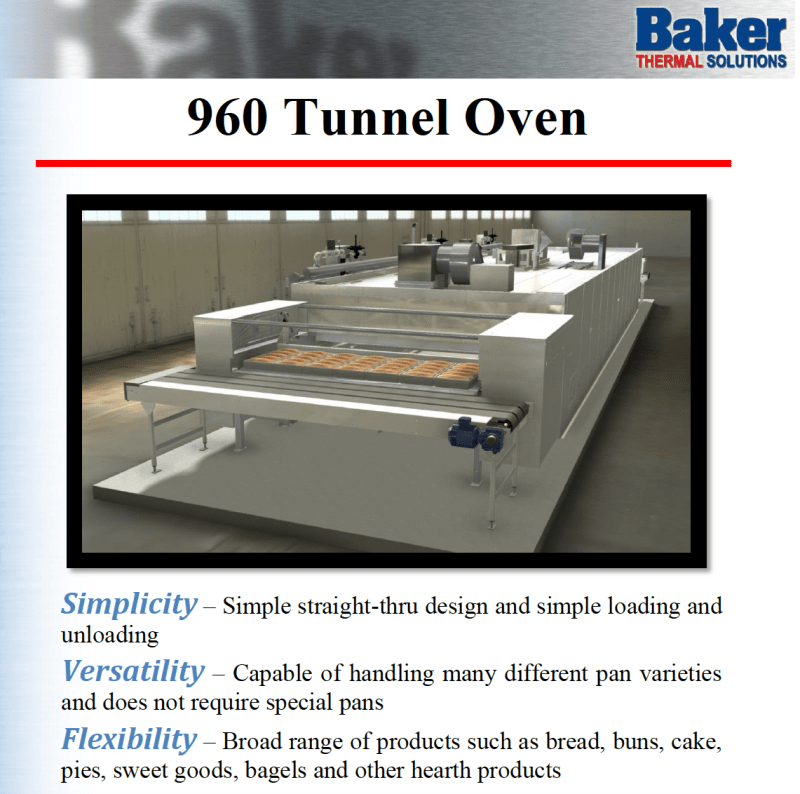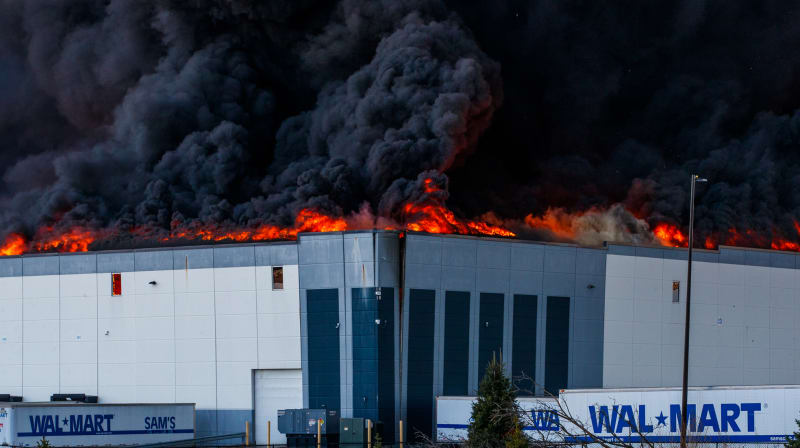Fire suppression, AKA sprinkler, systems are supposed to 'suppress' fires, meaning that they're designed to knock fires down before they get out of control.
Note that I was in an old grocery warehouse, that had been converted to a large commercial bakery, when the sprinkler system was triggered, and the amount of water coming out of just ONE sprinkler head was amazing.
The grocery company was setting up their own bakery operation and I was working for the company that had sold them a pie line, which including, among other things a 80 foot long (baking chamber), direct gas-fired tunnel oven, consisting of a moving hearth made of four inch wide x 1/4 inch thick x 13 foot (12'-4" effective baking area) long steel slats. The oven had about a 12-15 foot long discharge section before the machine that removed the pies from the hearth was located. Anyway, I was there as the representative from the engineering department to assist in the start-up and tuning process. We had just started to do our first full baking temperature test, setting up all of the ribbon burners (there was one about every 12 to 18 inches, extending across the width of the baking chamber), similar to the oven shown below except with a longer discharge section:

About an hour or so into the test, a sprinkler head directly over that long discharge section of the oven was triggered and we were drenched with ICE COLD water (it was February in East Hartford, CT) and it immediately turned to steam when the water hit that 400+ degree steel hearth. Until they got the water shut off, we grabbed anything that we could to try and keep the water from hitting those hot steel slats as we were worried that they could warp. They finally got the water turned off, about the time the firetrucks showed-up.
Anyway, what had happened was, as I stated, this was being used as a warehouse for groceries and they had forgotten to replace the low-temp sprinkler heads, suitable for normal dry goods and such, with higher-temp heads, suitable for a bakery operation.
And before anyone asks, NO I was NOT related to the founders of the company, which was going by the name Baker Perkins when I worked there (1966-1980), which was the American subsidiary, located in Saginaw, MI, of what was a British company, headquartered in Peterborough, England. While my family name is currently the same as was the name of one of the co-founders of the company, it was not spelled that way when my first paternal ancestor immigrated to America from Germany in 1850. It was spelled Becker until the family decided to change it to Baker during the Franco-Prussian war (there was a lot of anti-German sentiment in the country at the time and the family owned men's clothing stores in Toledo and Cleveland so it was done for business reasons).
John R. Baker, P.E. (ret)
Irvine, CA
Siemens PLM:
UG/NX Museum:
The secret of life is not finding someone to live with
It's finding someone you can't live without

